"The Seven Wonders of Sanuki" by Tsuyoshi Ozawa at the Kagawa Museum
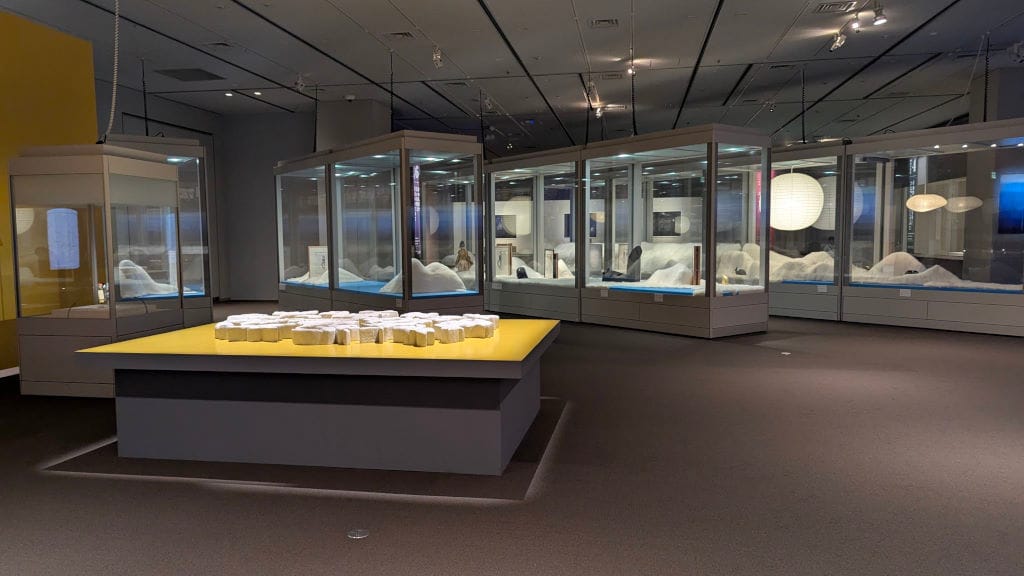
The autumn session of the Setouchi Triennale 2025 has started a few days ago, and... Despite having had three days off (the weekend and today), I haven't been to a single island yet. Last weekend was just too crowded. It's currently the Mid-Autumn Festival in China, which is, if I understand correctly, the biggest traveling holiday of the year there. And it feels like many of those travelers are in Japan this year, a sizable proportion in the Setouchi region. Also, I had planned to go to Megijima today, and maybe Ogijima, too. However, I took a short "morning nap" (I got up too early for my taste today) and missed the ferry. Oops.
Then, I remembered that Tsuyoshi Ozawa's exhibit at the Kagawa Museum was ending soon, and, since I hadn't been yet, today was the perfect occasion to visit. Luckily, the crowds were more interested in Naoshima—it seems affluence records were broken this weekend—than in the Kagawa Museum, even though the museum is also part of the Triennale. In fact, most local museums have special exhibits during the Triennale by renowned artists who participate in the festival. This year, it's Tsuyoshi Ozawa's turn at the Kagawa Museum.
Tsuyoshi Ozawa is quite familiar with Kagawa Prefecture. As a member of the Group 1965, he participated in the Triennale three times: in 2013, 2016, and 2025. He has also had a permanent installation on Naoshima since 2006: Slag Buddha 88, which you may have seen at the entrance of the Valley Gallery.
I was surprised by his limited involvement in Group 1965's project on Ogijima this year, but now I think it's because he was preparing for his solo exhibition at the Kagawa Museum.
So, what is the exhibition about?
I think the best way to explain is to quote the description from his personal site:
Tsuyoshi Ozawa is interested in the boundary between pure art and other things, and is widely acclaimed both in Japan and abroad for his work that raises various questions about history and society with humor and a critical spirit. In this exhibition, he focuses on objects and events from his own perspective in the vast amount of materials and information on the history, art, and folklore of Kagawa that are collected at The Kagawa Museum, and plans to display works inspired by them and actual materials. The world of his work, where different perspectives such as children and adults, past and present intersect, invites new encounters with the history and culture of Sanuki, as well as considerations about manufacturing techniques, collection and display, views on the world, natural science, and views on life and death.
Like many of such descriptions, it's somewhat abstract (often because they're written before the project is finished). In short, Ozawa decided to recreate the "Seven Wonders of Sanuki" (Sanuki being the original name of Kagawa), drawing from the region's traditional culture: urushi (lacquerware), fish from the Seto Inland Sea, Bunraku puppets, and more.
As explained in the blurb above, he mixed traditional artifacts with his own creations, resulting in a strange blend of the historical and contemporary.
I didn't take many pictures, but here are a few:
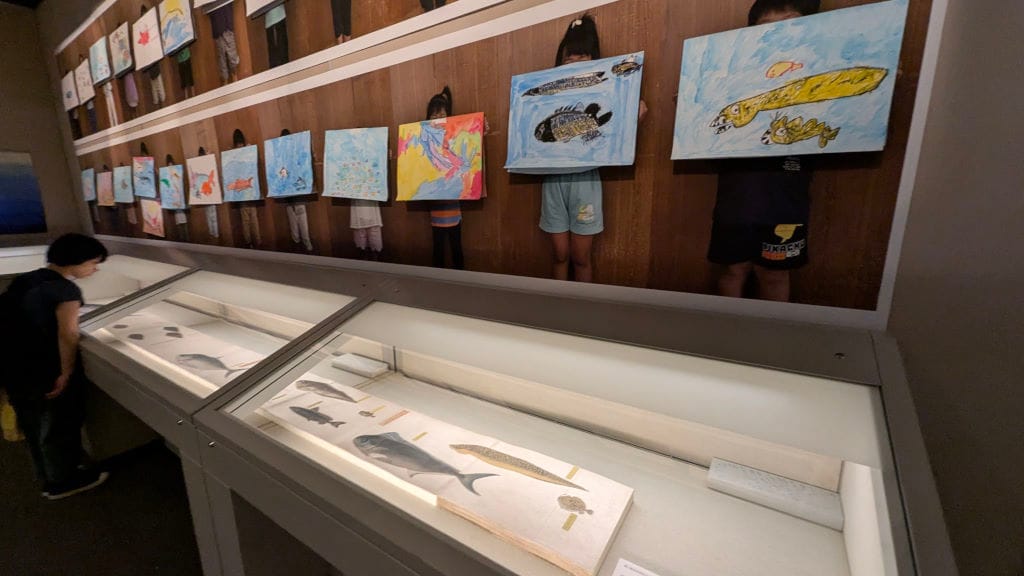
This is probably my favorite part of the exhibit. There are some very precise and scientific drawings of the fish found in the Seto Inland Sea, and above them drawings of the same fish by children.
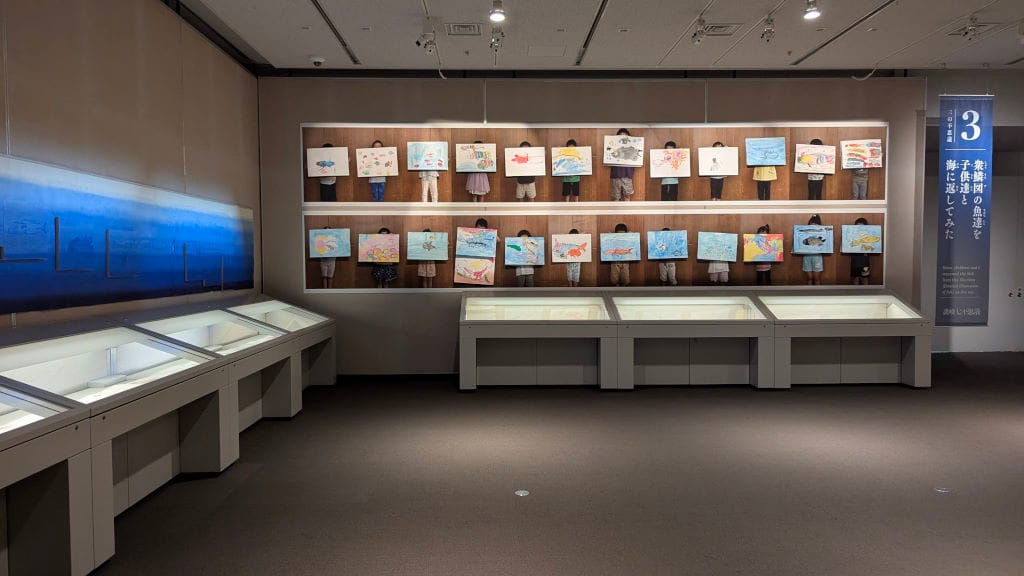
That's one of the many things I love about Japan's approach to art and museology. In France (and probably many other Western countries), museums always try to create a distance between art and people. This distance can be physical, psychological, or otherwise. This is especially noticeable for children. Most art museums are not child-friendly; worse yet, children sometimes feel unwanted in such places.
Not in Japan. In addition to the many workshops and events aimed specifically at them, children are often put front and center in exhibits. Their art is sometimes on equal footing with that of renowned artists.
I will always be grateful that my daughter was part of a very official Art Setouchi exhibit (with many other children) when she was only two. Not to mention the dozens of workshops my kids could join during the Triennale or over summer vacation at the city's museums. There is no better way to introduce kids to art and teach them that it's for everyone, not just for a cultural (and often social) elite.
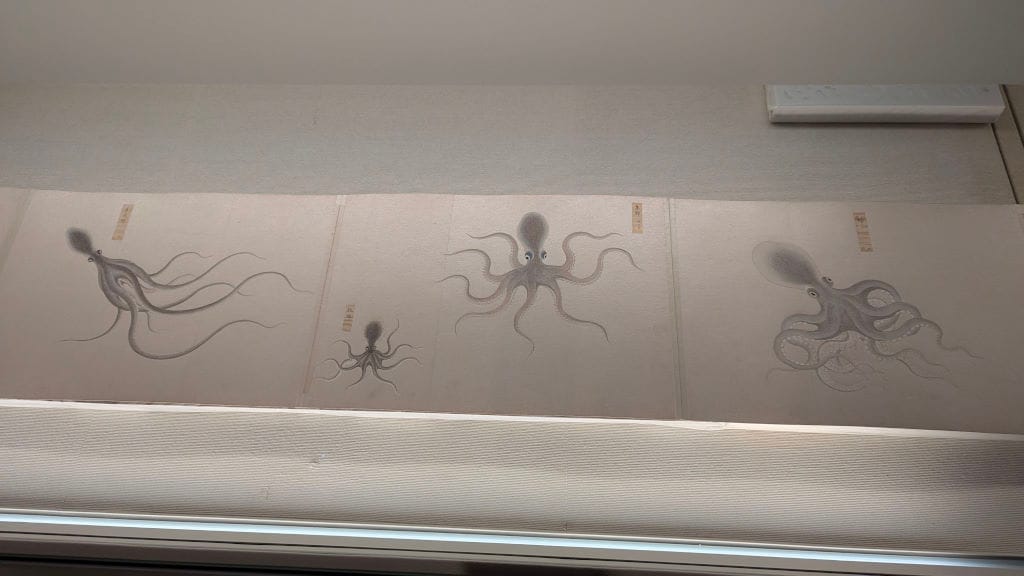
Oops! Close-ups of the drawings weren't allowed, but I only saw the sign after the fact, and the woman in charge of watching the room didn't scold me. It probably wasn't close enough. Phew!
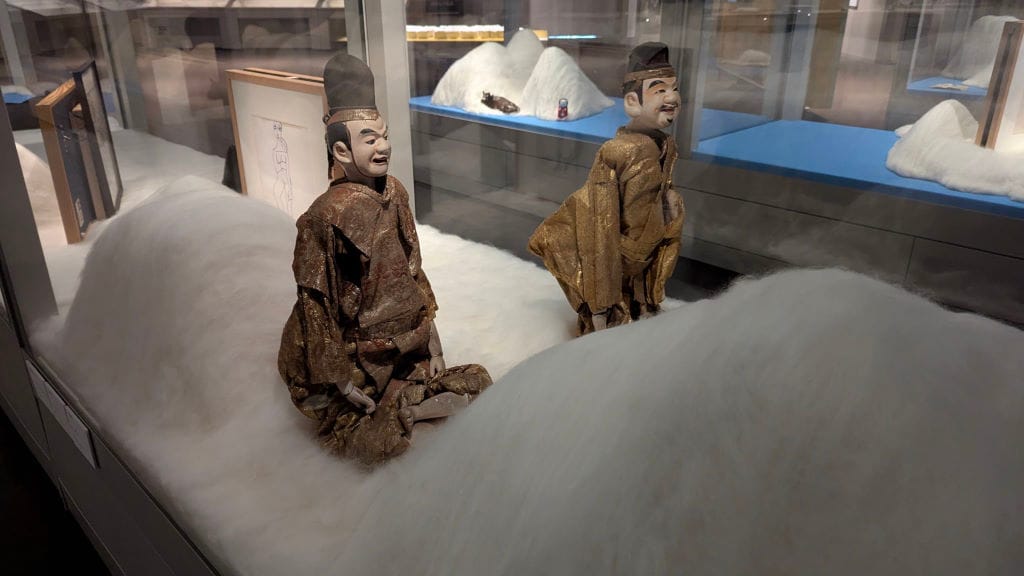
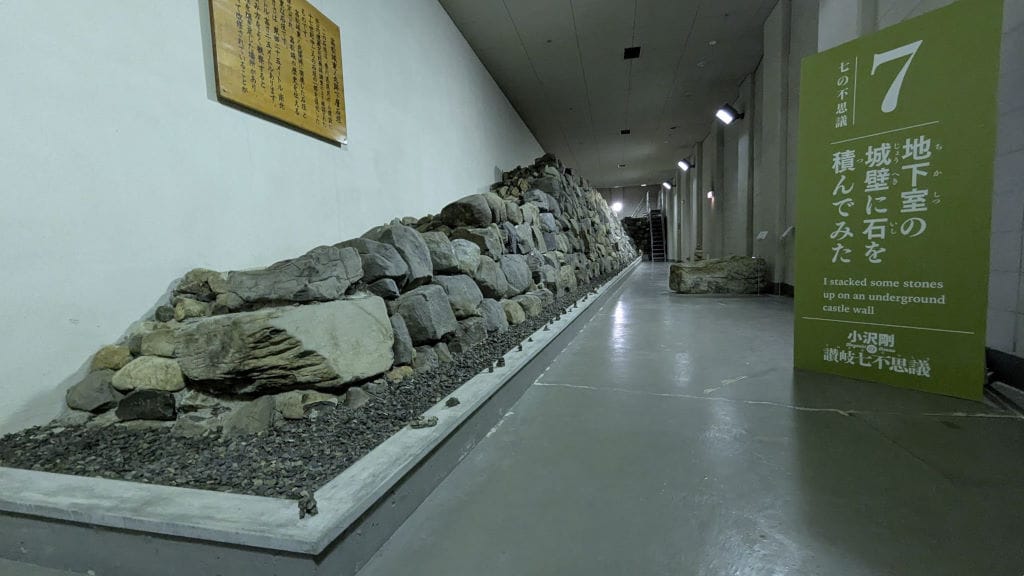
The "Seventh Wonder" is hidden outside the museum, but there are signs and hints to help you find it. It's a collection of small stone stacks by Ozawa, located on and around one of the original walls of Takamatsu Castle.
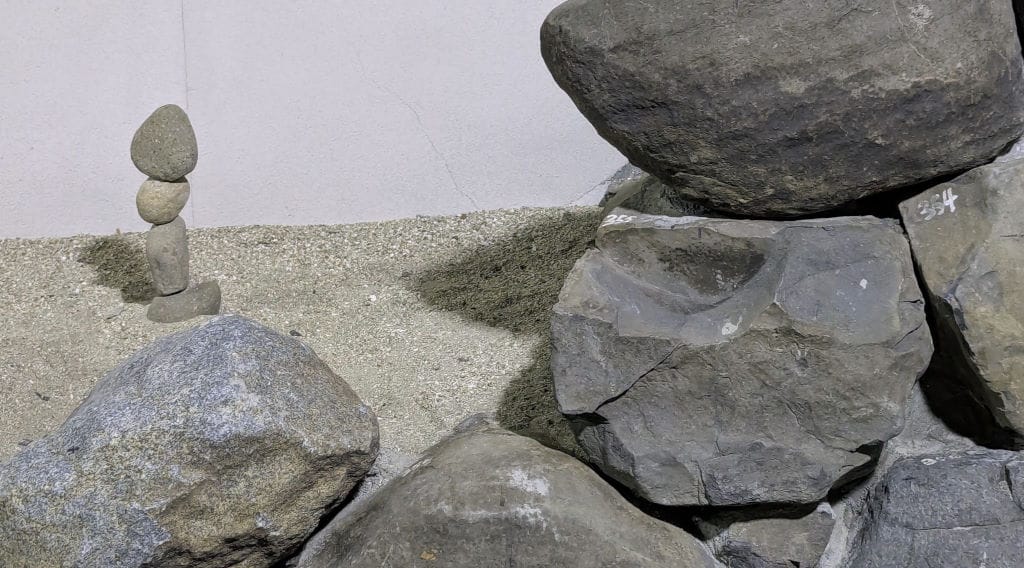
It's a bit late to advise you to visit this exhibit unless you're already in town (it ends on October 13), but the main point of this post is to remind you that the local museums are also worth a visit during the Triennale. This is especially true if you want to escape the crowds for a little while.
There is one caveat, though. Sadly, the Kagawa Museum has very little information and documentation in English or other languages. I guess they don't have a budget for translating temporary exhibits. It's unfortunate that they haven't translated any of the permanent exhibits yet. The permanent exhibits include permanent art, as well as a very detailed history section if you want to learn about the history of Kagawa. However, you'll need to be able to read Japanese for this, although the history section of the museum has audio guides in Japanese, English, Chinese, and Korean.
In other news, as I mentioned, Naoshima and Teshima have been extremely crowded. It's worth mentioning again that if you have the opportunity to visit these two islands outside of the Triennale, you should take it. Don't forget that most of the art on these islands is permanent, and there are fewer crowds outside of the festival. The Setouchi Triennale really takes place on all the other islands, which are often ignored by foreign tourists. Some don't even seem to know they exist. Don't make that mistake.
Finally, on the technical side of things, the site moved to a new server yesterday. While it seems that everything went smoothly, this post is also a test. Please tell me if you see anything out of the ordinary.
As I mentioned before, big changes are coming. I'm about to merge this site with my other online writings. This could happen as early as this week.
But don't worry; if you're only interested in the Setouchi Islands, you should only receive posts related to them. I'll explain everything in due time.
And if you see a lot of aesthetic changes, some of which may be less than ideal, it's because I'll be trying different options until I'm satisfied with one.
I think that's all for now.
As always, thanks for reading.
If you enjoyed this post, please share it with your friends and contacts. If you haven't signed up for the newsletter yet, now is a great time!
See you soon.
